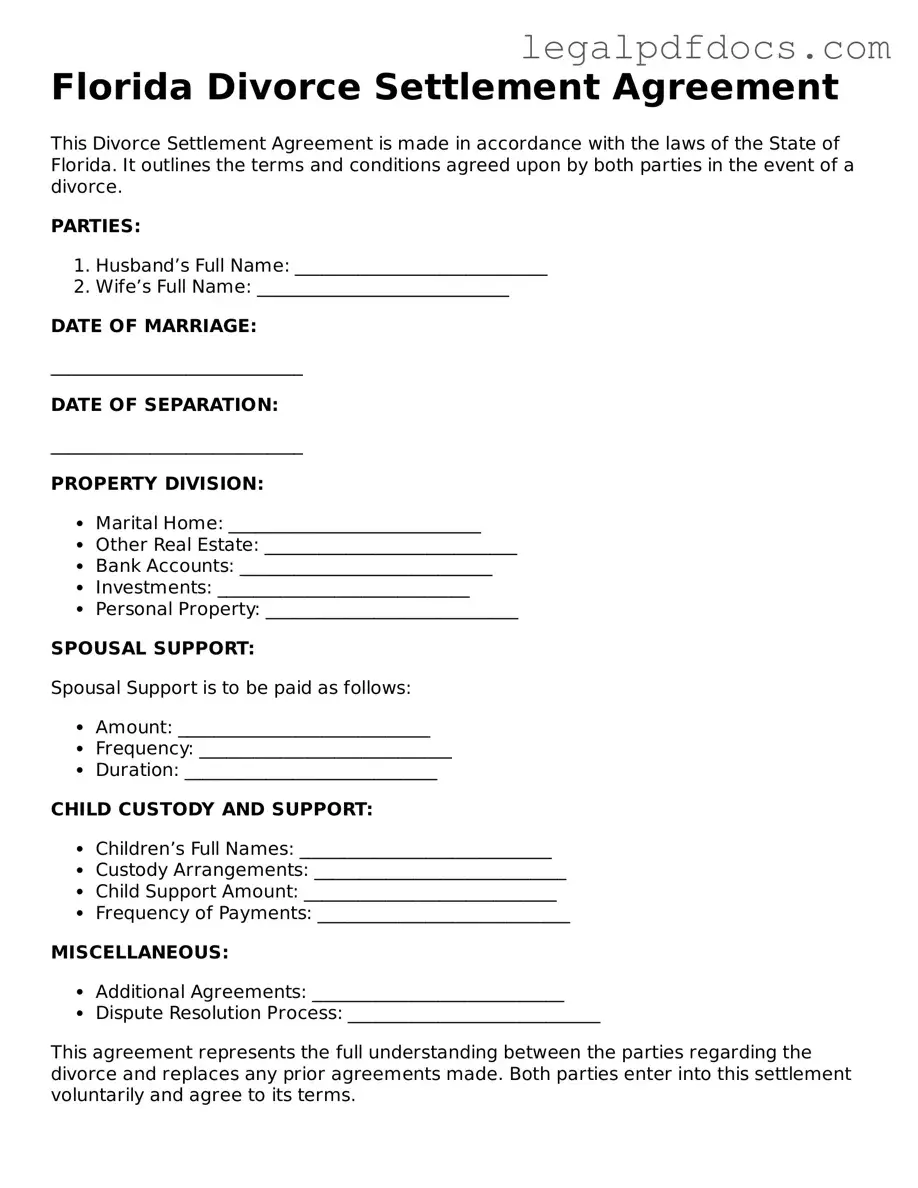When navigating the complexities of divorce in Florida, a Divorce Settlement Agreement form serves as a crucial document for couples seeking to outline the terms of their separation. This form captures essential agreements regarding the division of marital assets and debts, child custody arrangements, and spousal support, ensuring that both parties have a clear understanding of their rights and responsibilities moving forward. It is designed to facilitate an amicable resolution, reducing the potential for future disputes. By addressing critical issues such as parenting plans, visitation schedules, and financial obligations, the form promotes transparency and fairness. Moreover, the Divorce Settlement Agreement must be signed by both parties and submitted to the court for approval, making it a legally binding contract that protects the interests of everyone involved. Understanding the importance and intricacies of this document can empower individuals to approach their divorce with clarity and confidence.
